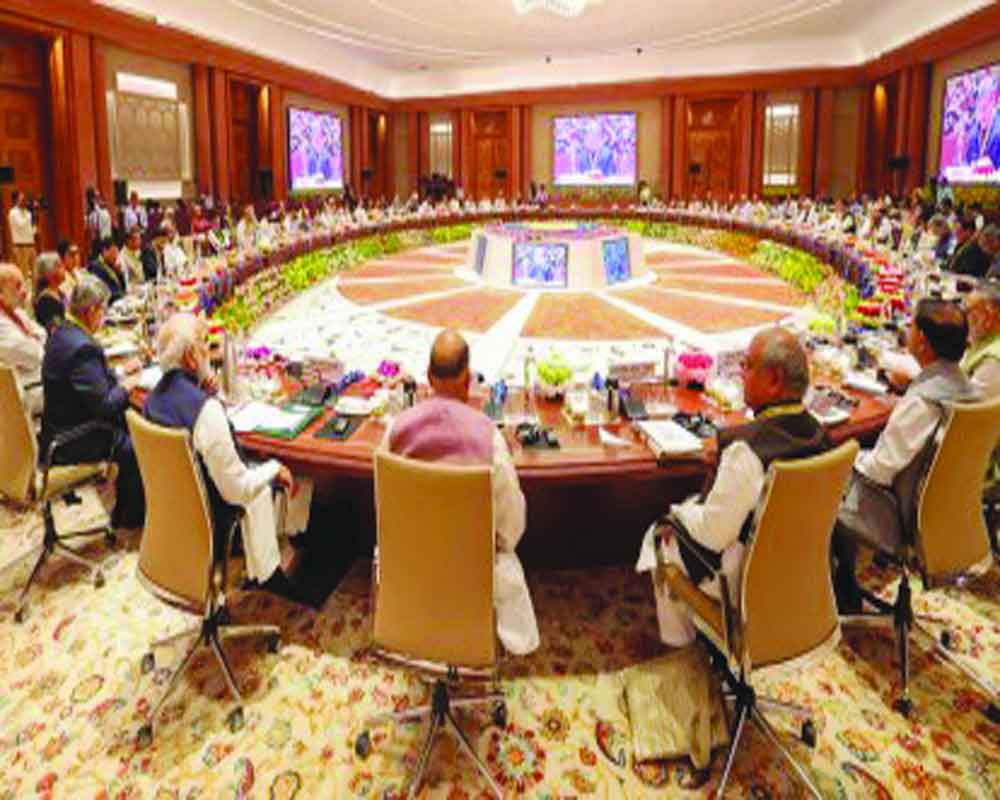India's federalism intricately balances centralised authority and regional autonomy. Recent Supreme Court cases on Delhi and Article 370 illustrate this dynamic, showcasing a blend of asymmetric and symmetrical federalism, shaping the nation's governance landscape toward progress and unity
Federalism lies at the heart of India’s constitutional framework, embodying the delicate balance between centralised authority and regional autonomy.
In the annals of Indian jurisprudence, the discourse on federalism has often been characterised by its intricate dance between asymmetry and symmetry. Recent judicial pronouncements have brought this dynamic to the forefront, illustrating the evolving contours of federalism within the Indian constitutional framework. Two seminal cases, the Government of NCT of Delhi v. Union of India and the In Re: Article 370 of the Constitution, have served as crucibles for testing the delicate balance between centralized authority and regional autonomy.
THE DELHI CONUNDRUM
The saga began with the Government of NCT of Delhi vs Union of India, where the Supreme Court grappled with the constitutional conundrum surrounding the governance of the National Capital Territory of Delhi. The interplay between Articles 239 and 239AA of the Indian Constitution set the stage for a protracted power struggle between the Union Government and the Delhi administration. While Article 239 vested administrative control in an administrator appointed by the President, Article 239AA conferred upon Delhi a semblance of statehood, complete with an elected Legislative Assembly and Council of Ministers. The 2021 Amendment sought to recalibrate this delicate equilibrium by circumscribing the powers of the Legislative Assembly and reinforcing the authority of the Lieutenant Governor.
In a landmark judgment, the Supreme Court reaffirmed the principles of federalism and struck a blow for regional autonomy. Chief Justice Dr DY Chandrachud, leading the bench, underscored the unique constitutional status accorded to Delhi, labeling it an “asymmetric federal model.” This model, while retaining Delhi’s classification as a Union Territory, imbued it with federal characteristics, thereby reshaping the contours of the Union-Delhi relationship.
THE ARTICLE 370 DILEMMA
Contrastingly, the narrative took an unexpected turn with the judgment on Article 370, which pertained to the erstwhile special status of Jammu and Kashmir. The court, in a departure from the asymmetric model, opted for a more symmetrical approach. It held that the special provisions accorded to Jammu and Kashmir under Article 370 did not confer internal sovereignty akin to that of a distinct State. Rather, Article 370 was construed as an instance of asymmetric federalism, wherein specific arrangements tailored to the unique circumstances of Jammu and Kashmir were accommodated within the federal framework.
This shift towards symmetry in the context of Jammu and Kashmir’s special status marked a departure from the traditional understanding of federalism in India. By disavowing the notion of internal sovereignty, the court underscored the principle of uniformity within the federal structure, emphasising that differential treatment under Article 370 did not equate to a distinct form of sovereignty.
CONCLUSION
The juxtaposition between these two judgments accentuates the nuanced evolution of federalism within India’s governance structure. While the Delhi verdict reaffirmed the validity of asymmetric federalism, the ruling on Article 370 signaled a shift towards symmetry, albeit with due consideration for regional nuances.
Again, the Supreme Court of India stands as a paragon of constitutional stewardship, guiding the nation towards a more equitable and cohesive federal union. Through its astute interpretation of the law, the court deftly navigates the complexities of federalism, embracing the dynamic interplay between asymmetry and symmetry. In doing so, it upholds the fundamental principles of both central authority and regional autonomy.
As the nation grapples with its federal identity, these judgments serve as a testament to the judiciary’s steadfast dedication to striking the delicate balance between centralisation and decentralisation. The Indian judiciary’s continued endeavor to navigate the intricate labyrinth of federalism underscores its pivotal role in shaping the nation’s governance landscape.
Boldly asserting the virtues of governance, these judgments epitomise the essence of federalism, serving as the harmonious melody that unites our diverse nation in its pursuit of progress and unity.
(Sonal Gupta practises law at the Supreme Court of India and Rahul Parashar at the High Court of Delhi)


























